The most common question when writing the perfect brief for a creative agency or design studio is… where do I start? If you want the design process to run as smoothly as possible and to budget without countless amends, it is all about asking the right questions to cover all bases. Here are some tips on writing a good brief from the perspective of the studio that receives them. In addition, we have created easy-to-fill-in electronic briefs for our clients, which are available to download at the bottom of this post.


You get out what you put in
The value of an excellent brief means purpose is at the forefront of the designers’ minds. David Airy, an admired industry leader, says, “It spells out exactly what clients want to achieve. It acts as a point of reference for everyone involved.” Cementing the client’s goals for the project is vital in ensuring we can meet expectations. This essentially forms part of the working contract between the client and us. From our experience, breaking down a brief into these relevant sections is a great way to ensure you cover all the essentials.
Job details, its background, and what are hard deadlines
We like to begin with housekeeping, and this may seem boring when they are so much exciting design work to think about, but getting the admin correct and clear will paint a perfect basis on which to base the design. Again the more detail and information provided by the client to their graphic designer, the better the result ultimately.
What is the project name?
What type of job is it? A brochure, a suite of flyers, or something else?
Information on size and specs is so important – do you have specific dimensions in mind, or do you need recommendations? What about printing? What do you need, how many, distribution, proofing process, etc.? Most graphic designers will always work to any constraints and deadlines. Be clear on what your deadlines are, and let us build the milestones to meet them, Breaking down the deadlines into initial concepts, material deadlines, client amends, and roll out and then finished art is an excellent way to construct a realistic timeline for your project.
Audience, objectives, and message
It should be clear from the briefing notes what the project’s purpose is and who its audiences are. What are the key messages and overall objectives of the project? Who is supplying the images and the copy? All of this needs to be clear, and most design agencies have great relationships with copywriters and photographers, so we can certainly help out there.
Too big for a brief sheet
At our Sydney-based graphic design agency, we prefer to meet in person or over Zoom for a branding project or significant campaign to help or assist in formulating a brief. A follow-up meeting with key stakeholders may also be necessary and would determine any functional and/or emotive benefits, brand personality, and values whilst mapping out the customer journey.
Hope this helps. And if not, reach out to us. We at Fresco Creative are only too happy to help.
